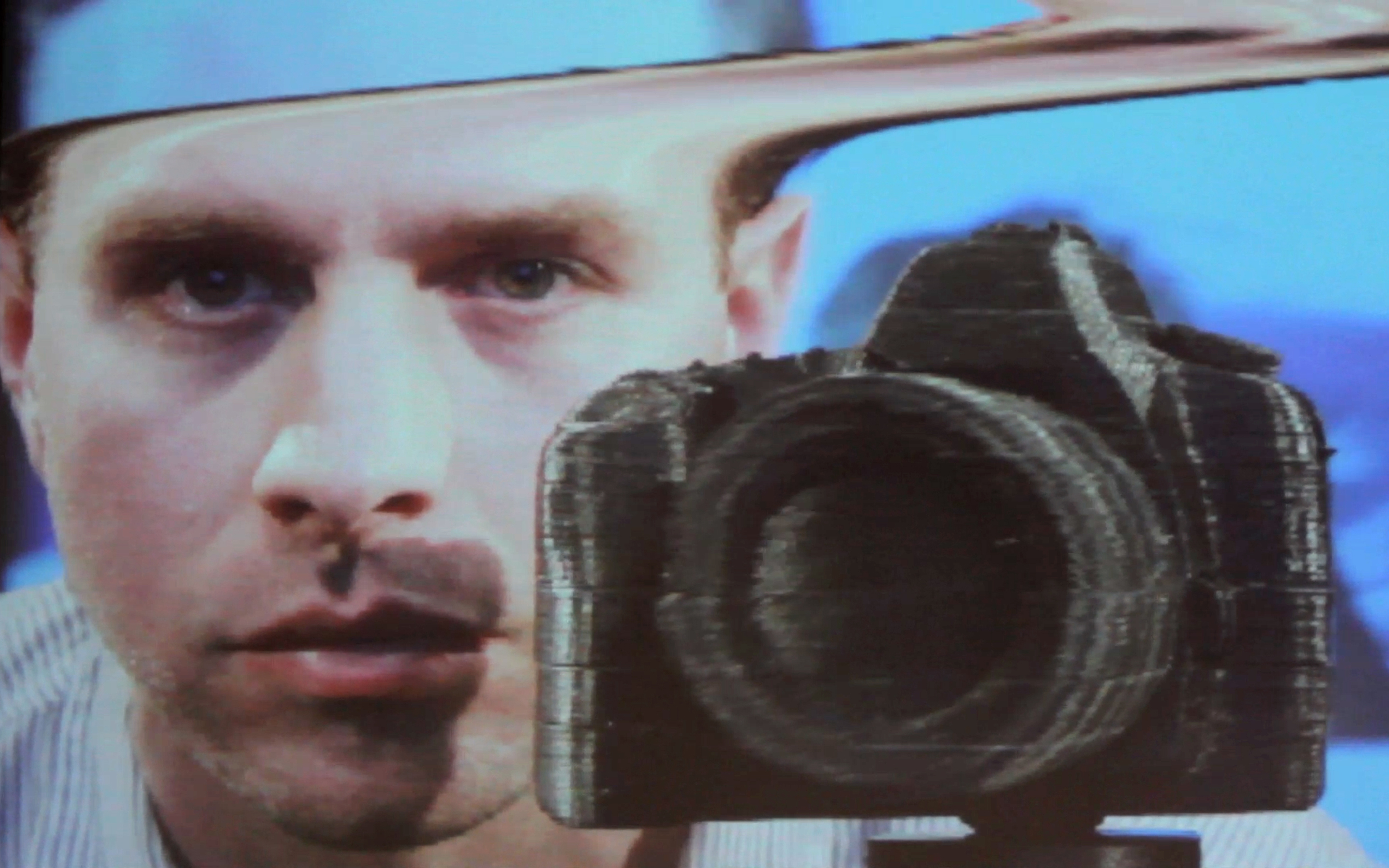Squint is the first in a series of installations in which Tyson Parks invents new processes to explore the relationship between form, image, motion, time, perception, and memory. This series of invented process artworks is called "Mnetractoscopes"; a term coined by Parks, taken from Latin and Greek etymology, which roughly translates to "viewer(s)" that "draw or pull" from "memory". This naming serves as homage to early animation devices such as the pre-historic Thaumotrope, Joseph Plateau's Anorthoscope, or Eadweard Muybridge's Zoopraxiscope. Parks puts forth the idea that the development and dissemination of these types of devices through the end of the 19th Century brought about a significant change of self-awareness in human kind that led directly to the modernist revolutions in science, art, philosophy, and technology in the 20th Century.
Squint is composed of a sculptural object; a replica of a familiar everyday object that has been distorted and twisted beyond recognition and into abstraction and that sits atop a stand, slowly rotating. A camera films the object in motion, sending a live video feed of its view to a computer. Just above the camera is what Parks calls a "transformative mirror"; a projected screen that shows a processed view of the live camera feed. In this virtual reflection of the space, the public that is present and circulating within the room are abstracted, while the sculptural object is de-abstracted and revealed in its original and recognizable form.
Central to Parks' work is an investigation of communication, perception, and translation. The artist questions how new perspectives expose hidden relationships and how we might problem solve around the limitations of available perspective. According to him, it is through the discovery of the limitations and functions of our visual processes that allows us to communicate, collaborate and coexist in new and different ways.











